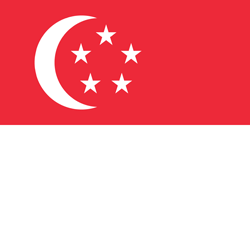What is Passport Ranking?
Passport Ranking refers to the process of evaluating and comparing global passports based on the level of travel freedom they afford to their holders. The ranking is typically done through the use of a Passport Index, which employs specific methodologies and criteria to measure the global freedom of movement associated with each passport. The assessment of this mobility freedom is based on the number of destinations that allow visa-free entry, visa-on-arrival, or electronic travel authorization (eTA) for individuals carrying the respective passport. The Zenith Mark offers the most precise and up-to-date ranking of passports, utilizing a straightforward and user-friendly methodology that can be easily understood by all users. It provides reliable and accurate results, assessing the strength of each passport in the ranking and the extensive range of travel freedom it offers to its holders.
Passport ranking is essential for travelers exploring diverse global destinations as it assesses passport strength and the availability of visa-free destinations. This knowledge guides decisions regarding ways to enhance travel freedom, including options like pursuing citizenship or residency in another country through programs such as citizenship and residency-by-investment. The Zenith Mark also facilitates passport comparisons based on their strength and international mobility.

How passports are ranked in the Zenith Mark
The Zenith Mark employs a comprehensive methodology to evaluate and compare passports worldwide. By meticulously analyzing the visa requirements and policies imposed by destinations across the globe, the index ranks 199 passports in descending order. This number corresponds to the countries and territories that issue their own passports.
The ranking is primarily based on the number of visa-free travel destinations available to passport holders out of a total of 229 destinations. These destinations encompass countries and territories with independent passport systems. It is important to note that the index also considers 31 territories, which, although not issuing their own passports, are counted as destinations for the purpose of evaluation. This approach ensures a comprehensive assessment of each passport’s strength and the extent of travel freedom it provides.
The Zenith Mark adheres to a comprehensive methodology outlined as follows:
- Analysis of Visa Requirements: The visa requirements for ordinary passport holders from all countries and territories issuing passports (199 passports) are meticulously studied when traveling to each of the 229 worldwide destinations intended for short-stay purposes like tourism and business. Multiple information sources, including data from the International Air Transport Association (IATA), relevant government websites, and other official and reliable visa policy sources, are utilized.
- Categorization of Destinations: Based on the available information regarding visa policies and requirements for each destination, the destinations associated with each passport are categorized into five fundamental groups:
- Visa-free access
- Visa on arrival
- Electronic Travel Authorization (eTA)
- Visa Online
- Visa Required
- Calculation of Visa-Free Destinations: The number of destinations falling into the first three categories (visa-free access, visa on arrival, and electronic travel authorization) is summed for each passport, providing the total count of destinations where a pre-arranged visa is not required—referred to as visa-free destinations for a passport.
- Ranking by Visa-Free Destinations: Passports are arranged in descending order based on the number of visa-free destinations associated with each passport. The top-ranked passport, occupying the first position in the ranking, signifies the most powerful passport globally, granting its holder the highest degree of global freedom of movement and access to the largest number of visa-free destinations.
- Ongoing Monitoring and Updates: Visa policy updates are continuously monitored, and the passport ranking is promptly updated to reflect changes in the number of visa-free destinations per passport.
Factors Shaping Passport Strength
The strength and ranking of a passport are influenced by various factors, including diplomatic relations, political, economic, and security considerations. However, the primary determinant is the visa exemption agreements established by a country with other nations. The strength of a passport hinges on the level of travel freedom it affords its holders, which is contingent on the number of countries worldwide that exempt holders of that passport from obtaining a prior visa. In essence, the greater the number of visa-free destinations accessible to passport holders, the stronger the passport becomes, resulting in a higher ranking in the passport ranking index.
Expanding Freedom of Movement and Global Travel Opportunities
Individuals holding passports with lower rankings in the global passport index may encounter challenges when seeking to travel to various destinations worldwide compared to those with top-ranking passports. Nevertheless, there are several avenues and solutions available to enhance an individual's freedom of movement and international travel. One such solution is pursuing a robust second passport through citizenship-by-investment programs. By obtaining a second passport, travelers can broaden their options for international mobility and transcend the limitations imposed by their original passports.
Glossary
Passport Ranking Index
It is a tool that assesses and ranks passports based on the number of visa-free travel destinations they offer..
Visa-free travel
The ability of a traveler to enter a specific destination without obtaining a visa in advance.
Visa on arrival
A visa granted by the authorities of a country or territory upon the traveler's arrival, eliminating the need for a prior application
Electronic Travel Authorization
An online authorization required by some visa-exempt travelers to pre-screen their details before travel.
E-Visa
A visa obtained electronically through online application, typically in a non-physical form, requiring personal details, a photo, and visa fees.
Ordinary visa
A traditional visa obtained by applying at embassies, consulates, or visa application centers in the applicant's country of residence, usually affixed to the passport.
Visa-free destinations
The total number of destinations that a passport holder can travel to without a prior visa, including visa-free access, visa-on-arrival, and electronic travel authorization.
Passport Rank
The ranking of a passport on the index corresponds to the total number of visa-free travel destinations accessible to its holders.

























